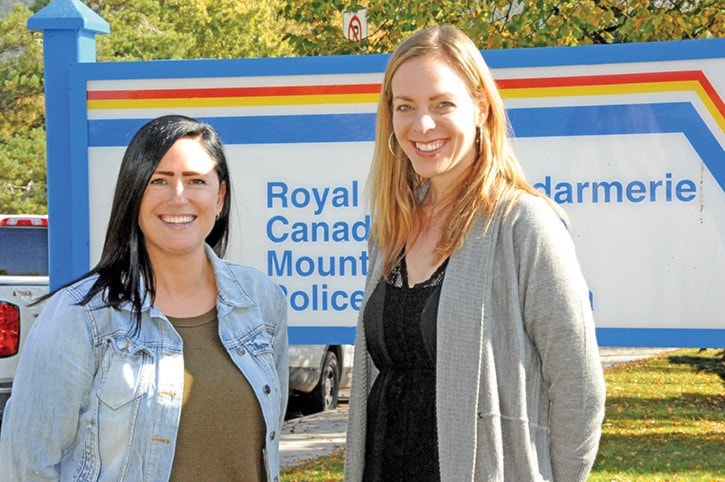Williams Lake RCMP Const. Sharon Peters said there are at least a dozen girls she knows of in Williams Lake who are being trafficked in prostitution.
“I got into this work to help, so it breaks my heart to see these girls (being trafficked). But sometimes they are so traumatized and entrenched that our help isn’t wanted. It’s a cycle.”
Peters, and Boys and Girls Club of Williams Lake Harm Reduction Co-ordinator Jordan Davis, are hoping to break that cycle of abuse by reaching out to the community’s youth before they choose to enter a high-risk lifestyle.
“The goal is to build relationships with these kids,” Peters said. “They are learning so much, so young (because of the Internet) that it leaves them vulnerable. We want them to know that the police are here to keep them safe and help them navigate this new world safely.”
Peters and Davis’ collaboration, called the Human Trafficking Prevention Project, will see the women meet with a dozen Grade 8 students once a week for four weeks, for the duration of the school year in rotations. They will also reach the entire Grade 8 population through talks in Career and Personal Planning (CAPP).
During that time Davis said they will discuss core needs, healthy relationships, how to keep safe on the Internet and how to recognize the warning signs of recruitment.
“Every teen is vulnerable. Kids need community and we want to be a safety net for these kids. If they need someone to talk to we want them to feel comfortable coming to us, their teachers or police officers.”
Peters said girls between the ages of 12 to 18 are most vulnerable to exploitation.
Even though First Nations girls only make up four per cent of the population, they account for 50 per cent of sexually trafficked victims, Davis and Peters said.
Girls are often trapped into trafficking by lower-level drug dealers who target vulnerable girls, adorning them with affection, gifts and free drugs, which leads to them becoming addicted and having to work off a drug debt.
“These guys know they can make a lot of money off these girls – $1,000 to $2,000 per day,” Peters said.
“People in our community are paying for these services because these girls are working. Unfortunately, there is a market everywhere,” Davis said.
During a recent visit to Debra’s Gate in Vancouver, the only rehabilitation centre in Canada for victims of human trafficking, Davis and Peters learned the facility received 27 referrals from victims in the Williams Lake area in the last year-and-a-half.
“For a community our size, I was shocked,” said Peters.
“The hope is we can get to these kids before anyone else does.”
Peters and Davis will also talk to students about the many dangers posed by unrestricted Internet access and the legal ramifications students can face if they distribute inappropriate photographs of others without consent.
“We get into really serious charges, really quick and we explain that to them,” Peters said, noting peer-to-peer exploitation is on the rise.
For more information on the Human Trafficking Prevention Project, Davis and Peters will be giving a presentation at the Fentanyl Community Forum Oct. 13 at 7 p.m. at City Hall.
